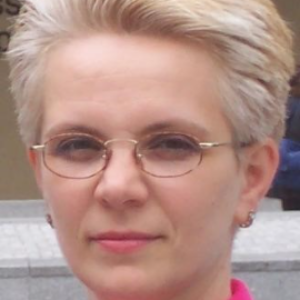Title : Biocomposites for the bone reconstruction – current approaches and future trends in research, applications and education
Abstract:
The need for permanent improvement of everyday life derives its essence from education and research, with applications in various fields. The hard tissue engineering represents one of the envisaged fields and the medical doctors always claim advanced solutions to adapt to the patients’ needs and demands. This paper is focusing on the biocomposite materials as potential alloplastic grafts. The state of the art in this domain is intertwined with the experimental results obtained by our research group and the partners from the consortia with whom we have worked for over 10 years. Our research product is a biocomposite material made of nanostructured ceramic matrix reinforced by micrometric Ti-based component. The main application is the bone reconstruction/addition at skull, maxillo-facial and orthopaedics level. The main goal of our research is to design and lab-scale produce such biocomposite materials fulfilling important demands, such as: to have similar structural architecture as the adjacent natural bone, respectively close mechanical properties; to be able to fit any bone geometry defect without damaging the surrounding natural bone; to have an improved biocompatibility vs. the existing similar materials/products. The powder metallurgy technology allows us, among other advantages, to perform the innovative combination of the hydroxyapatite (HA), as nanoparticles playing the matrix role, with TiH2 as micrometric reinforcing powder particles. Especially the sintering thermal treatments, respectively the spark plasma sintering (SPS) and two steps sintering (TSS), offer the proper conditions to keep the “nano”- feature of the biocomposites. A new concept named “foaming window” [1] was developed for the TSS treatment which is able to monitor the pores’ and the crystallin grains’ size, both parameters being tightly related with the biocompatibility one. From the characterisation point of view, advanced methods are used to highlight the thermophysical, chemical, morphological, structural and mechanical properties of the obtained biocomposites. The biocompatibility of these biocomposites was tested by in-vitro and in-vivo specific analysis and the obtained results are more than satisfactory. One important aspect is marked by the biocomposites’ capacity to transfer various drugs, targeting disease curing or human body organs recovery. Future expectations, from our point of view, is to make these biocomposites “smarter” and highly versatile for different medical applications. Also, for further research in this area we expect to develop dedicated policies and instruments to raise the interest of the public/private companies for the medical devices used for bone reconstruction, considering the advantageous economical aspects that these HA/Ti-based biocomposites present. Assuredly, all these outcomes are also possible involving more students and young researchers representing our future for whose formation we are responsible to design new education and research tools adapted to present days.
What will audience learn from your presentation?
- The well-known biocomposite system HA/Ti-based is still new because it is continuing offering large capabilities to improve the quality of the medical devices dedicated for the bone reconstruction/addition applications, depending on the use of the most advanced processing technologies.
- The manufacturing companies and their specialists may learn that the processing logistics is affordable, using conventional equipment specific to the powder metallurgy technology, with cost and energy savings.
- The medical doctors and/or researchers in the medical field will have the possibility to find details on the improved performances of these biocomposites such as: resorbability, geometrical stability, geometrical adjustments even during the grafting procedure, increased lifetime, large potential to evaluate the osseointegration process due to their translucence to the radiations, minimized risk to affect the body fluids with the biocomposite debris.
- Also, the above-mentioned audience will see that these biocomposites may have complex shape and dimensional design. Thus, the potential alloplastic grafts made of these biocomposites may be produced as different product: bulk (for medium-sized applications, around 10 cm2 as cross section); granules (i.e., for bone addition); thin films (from few microns up to few nanometers to coat current similar medical devices and subsequently to improve their properties).
- The education and research attendance could discover opportunities to create new jobs tightly connected to the Materials Science and Engineering applied in the Tissue Engineering field.
- The Artificial Intelligence’ (AI) representatives will discover that they could redirect their capabilities to a new frontier, such as the development of new non-invasive methods for evaluating the osseointegration process. This great advantage is due to the translucency of the HA/Ti-based biocomposites.
- The specialists in augmented/virtual reality (AR/VR) also may find new opportunity to train the Tissue Engineering and Medicine students and researchers to work together in designing and testing new medical devices made of advanced materials regarding their new functionalities as well as capabilities.


